News in Brief
-
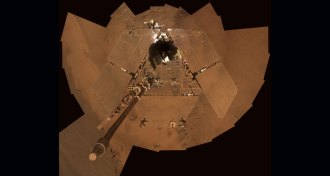 Planetary Science
Planetary ScienceThe Mars rover Opportunity is sleeping, not dead, NASA says
Opportunity is hunkered down in a deep sleep on Mars to ride out what’s looking to be a long dark dust storm.
-
 Physics
PhysicsThis heavy element has a football-shaped atomic nucleus
Three nobelium isotopes have oblong nuclei, and some sport a ‘bubble’ center.
-
 Artificial Intelligence
Artificial IntelligenceA new AI can focus on one voice in a crowd
The artificial intelligence can ignore background noise in videos and focus on what a particular person is saying.
-
 Health & Medicine
Health & MedicineIf you thought the most recent flu season was bad, you were right
The recent U.S. flu season was classified as highly severe overall, the third time since 2003 that the seasonal outbreak has earned that designation.
-
 Health & Medicine
Health & MedicineSuicide rates have shot up in almost every U.S. state
Suicide rates increased sharply in nearly all 50 states from 1999 to 2016, according to a new government report.
-
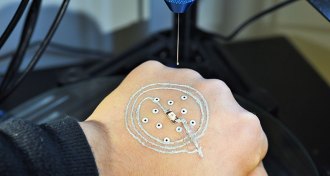 Tech
TechA new 3-D printer builds temporary electronics on your skin
A new 3-D printer that tracks and compensates for your slightest twitch can precisely print simple electronic devices onto your skin.
-
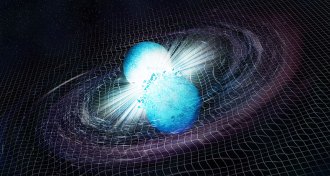 Astronomy
AstronomyA neutron star crash may have spawned a black hole
The neutron collision that took the astronomical community by storm last year probably created a black hole, researchers say.
-
 Health & Medicine
Health & MedicineExperts advise: Start colorectal screening at 45, not 50
The American Cancer Society recommends that colorectal screening begin at the age of 45 for average-risk individuals.
-
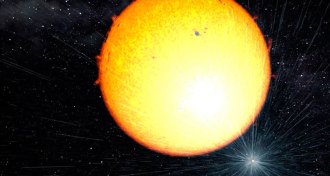 Astronomy
AstronomyTwo-faced star reveals a pulsar’s surprising bulk
An ultramassive pulsar is frying its stellar companion so that the star shows two different temperatures.
-
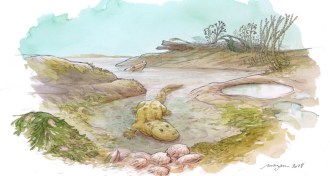 Animals
AnimalsThe first land-walking vertebrates may have emerged from salty estuaries
Early tetrapods were transitional creatures — not only between land and water, but also between fresh and salty environments.
-
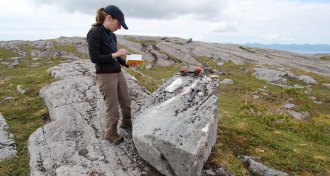 Climate
ClimateThe first Americans could have taken a coastal route into the New World
Alaskan glaciers retreated in time for ancient coastal entries of the first Americans.
By Bruce Bower -
 Health & Medicine
Health & MedicineHurricane Maria killed at least 4,645 people in Puerto Rico, a study estimates
Researchers estimate Puerto Rico’s death toll from Hurricane Maria at more than 4,500 people based on household surveys — dwarfing the official count of 64.